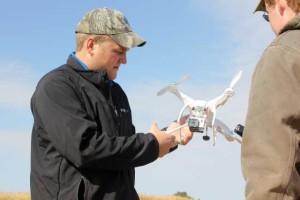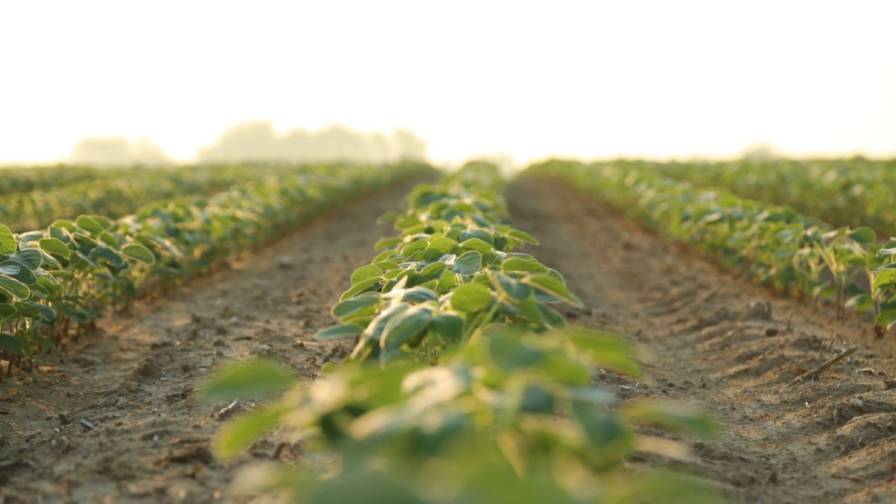Scouting 2014: New Season, New Concerns
Following a downright brutal winter that in many parts has soil temperatures laid low and the overall condition of the soil in question, this spring could throw a curveball by even the well-seasoned agronomist when it comes to early season field scouting.
“We’ve got good soil conditions coming in (to the season), but we had an open winter with some fairly deep frost levels so there’s going to be frost that is slow to come to the surface and it could hold some early planting down,” says Brad Ruden, director of agronomy services, South Dakota Wheat Growers (SDWG). “We all know that cold, wet soils tend to favor early season disease, but there’s also planting issues to consider – you’ve especially got to watch soil compaction with the larger equipment we’re using today.”
Scott Ahrenholtz, East region agronomy sales director, West Central Coop., Ralston, IA, has concerns of his own in his territory. “Corn rootworm is going to be a big one for us to monitor, especially with all of our corn-on-corn acres,” he says. “Soybean cyst nematode is another one, and aggressive testing is really important there. Disease-wise, we’re always looking for Goss’s Wilt disease in our corn-on-corn.”
As the season progresses, Ruden will keep his eyes open and his ears to the ground, hoping to get information from further east that tends to foreshadow what his network of 50 SDWG agronomists will be dealing with come planting time.
“We get a little bit of a heads up from watching what happens out in the Corn Belt,” he says. “Resistant corn rootworm is just hitting the Dakotas — I’d say it’s an emerging pest for us and something we’ll watch out for as our crops shift to more corn acres.”
Ruden says that although insect pressures typically remain low in his territory, herbicide-resistant weeds will factor quite prominently into the equation for his growers and scouts. “We’ve got four glyphosate-resistant weeds in South Dakota now and resistant kochia is becoming a major concern. It (kochia) starts to germinate early, as opposed to waterhemp (which doesn’t emerge until later in the season), so early season is a key time for our scouts to look for kochia.”
Mobile Technologies
For most scouts iPads are quickly becoming standard operating equipment and, come 2015, Unmanned Aerial Systems (UAS) will likely become another tool in the retail agronomist’s repertoire, but ground-based scouting is still the prevailing option.
“We’ve adopted iPad technology for all of our scouts, and one of the apps we’ve demoed is ScoutPro, which ties in nicely with Integrated Pest Management thru Iowa State,” says Ahrenholtz. “Whereas in the past our scouts generated a paper trail, now everything is scouted and identified electronically.”
According to Ahrenholtz, ScoutPro allows for a more precise scouting process. “The unique thing (with ScoutPro) is it helps us micro manage the field and find where our heavier disease and insect pressures are.”

A West Central Coop agronomist shows off the company’s UAV.
Like West Central, at SDWG all sales agronomists are issued an iPad right off the bat. “The iPads tie into our field maps and it’s just a really nice piece of technology to have out in the field with you,” says Ruden.
SDWG utilizes the soil mapping program MZB on its iPads, according to Ruden. “Rather than traditional grid sampling, MZB is management zone based, so we can drill down further and break a field into management zones for making variable rate fertilizer and planting decisions.”
Ahrenholtz confirmed his outfit’s purchase of a DMZ Aerial AIMQ Series quadcopter UAS for experimentation and research heading into 2015, when FAA is expected to sign off on the commercial use of UAVs. “UAVs are going to be an excellent tool to gain a better scouting perspective over a field, it’s more efficient than having scouts out walking fields,” he says. “However, we are well-aware and currently complying with all state and federal regulations surrounding small UAVS.”
After a couple years of tinkering, West Central has unearthed a couple challenges with the technology. “Wind has been a huge issue for us. The quadcopter is pretty small and it can really get blown around in high winds, making for some less-than-ideal images,” he says. “We’re also looking at trying to figure out the most efficient way to fly a field and get the images our agronomists need.”
“The thing about this year is, we know prices aren’t where growers would like them to be,” concludes SDWG’s Ruden. “Now is the opportunity for us to really focus on agronomics. That’s going to be absolutely critical because tight management and being sure we’re putting the right input on the right acre is going to be crucial in keeping profit margins where our growers want them to be. As margins get tighter, it’s going to take more management, and working with a trained, trusted agronomist can really pay off for the grower.”






